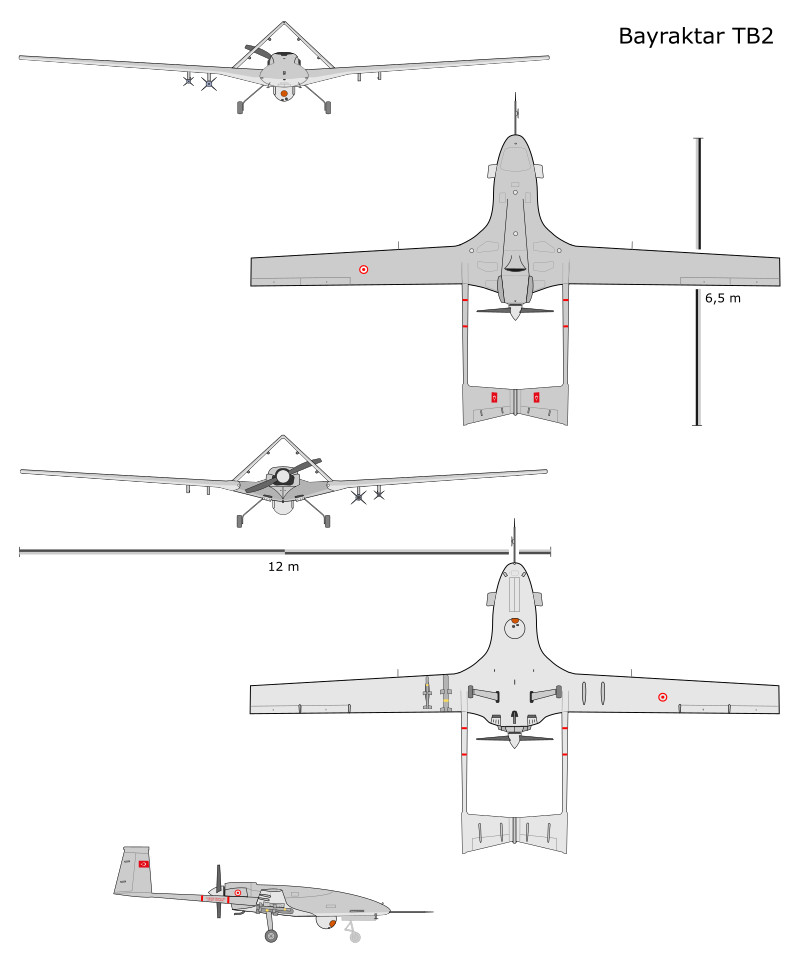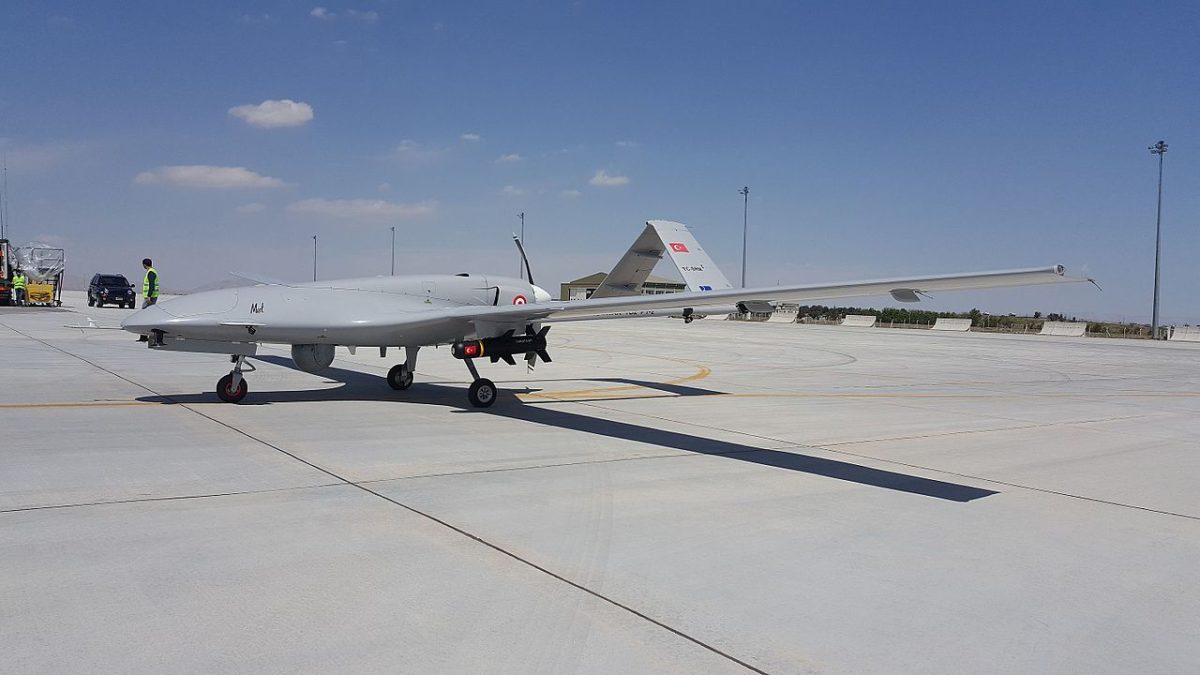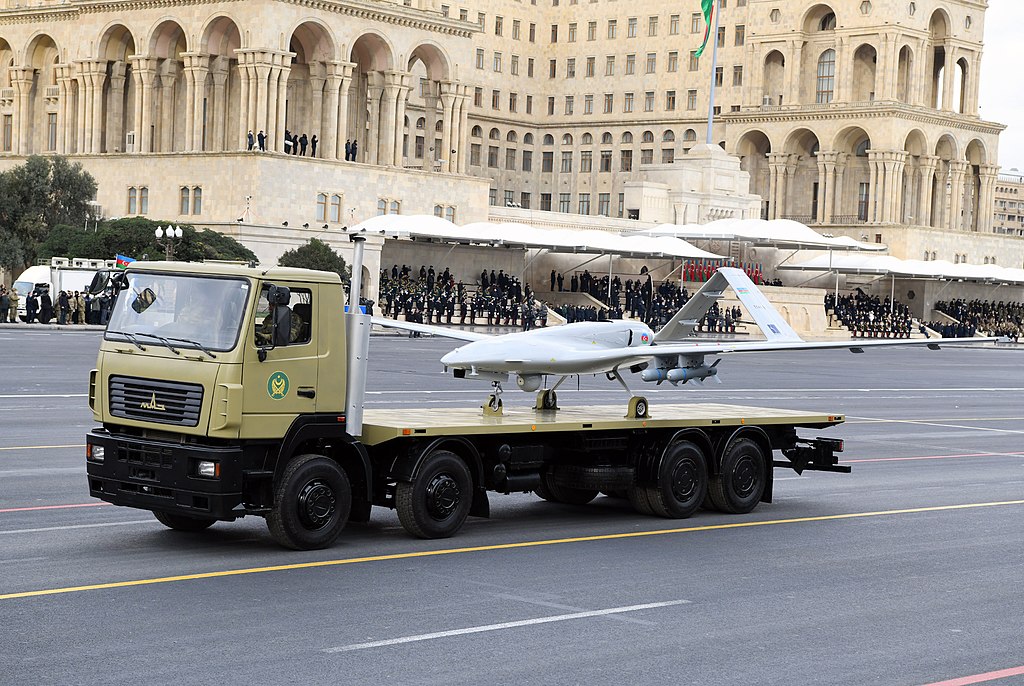Drones have become an increasingly important tool for military surveillance and reconnaissance, and the Bayraktar TB2 is one such drone that has gained significant attention in recent years. Developed by the Turkish Company Baykar Makina, the Bayraktar TB2 is a versatile and powerful drone capable of conducting various operations, including intelligence gathering, target acquisition, and surveillance. Equipped with advanced sensors and GPS navigation, the drone can fly for up to 24 hours on a single charge, with a range of 150 km and an altitude of up to 7,000 meters. With the Turkish military had utilized drones in conflicts in Syria and Libya, the Bayraktar TB2 has demonstrated its effectiveness in modern warfare. In this article, we will take a closer look at the capabilities of this innovative drone and its impact on military operations.
Introduction
The Bayraktar TB2 is a cutting-edge unmanned combat aerial vehicle (UCAV) that has gained immense popularity in military technology. This medium-altitude long-endurance (MALE) drone is produced by Baykar Makina Sanayi ve Ticaret A.Ş., a prominent Turkish company that mainly supplies it to the Turkish Armed Forces. The TB2 drone can operate remotely or autonomously and is monitored and controlled by a ground crew. It has been credited to Selçuk Bayraktar, who once studied at MIT. Since its inception, the TB2 drone has flown over 400,000 hours globally since November 2021 and has been exported to several other countries worldwide. Many nations have used the Bayraktar TB2 drone in various wars, including Azerbaijan, Ukraine, and Ethiopia, making it a sought-after military tool. Turkey, in particular, has used this drone to strike targets in Iraq and Syria precisely.
Development
The development of the Bayraktar TB2 was triggered by the U.S. ban on exporting armed unmanned aircraft to Turkey due to concerns about their potential use against the PKK both inside and outside of Turkey. In response, Baykar began developing a new combat tactical aerial vehicle system at the request of the Presidency of Defense Industries, following its first tactical UAV, the Bayraktar Çaldıran or Bayraktar TB1, delivered to the Turkish army in 2011. The Bayraktar TB2 made its first flight in August 2014, and in December 2015, a video was released of a missile test firing from the drone, a collaboration between Baykar and Roketsan. The arming of the Bayraktar TB2 was made possible by EDO MBM’s U.K. Hornet micro-munitions bomb rack, a variant of which was integrated into the aircraft by EDO MBM and Roketsan.
Previously, the aircraft relied on imported and regulated components such as Rotax 912 engines from Austria and optoelectronics from Canada and Germany. Despite being certified for civil use only, Bombardier Recreational Products suspended engine delivery to some countries in October 2020 upon becoming aware of their military use. The U.K. Department for International Trade disclosed details of exports of the Hornet bomb rack to Turkey from 2014 to 2020, including 16 out of 18 Standard Individual Export Licence applications being granted. Most of Baykar’s customers, including Ukraine, Poland, Morocco, and Kuwait, opted for the Wescam MX-15D over Aselsan CATS electro-optical turret due to weight and compatibility issues. However, the Turkish defense industry claims that locally manufactured alternatives have replaced all components previously imported.
Design
The Bayraktar TB2 platform boasts a blended wing body design and an inverted V-tail structure, generating thrust through a variable-pitch two-blade propeller in a pusher configuration. This propeller is mounted between the tail booms and powered by an internal combustion engine situated in the body. The modular monocoque platform features a detachable wing, tail boom, and V-tail components. The fuselage pieces comprise carbon fiber composite material with machined aluminum parts utilized at joints. Furthermore, the bladder tanks store the fuel, and fuel consumption is balanced with solenoid valves.

The ground control station (GCS) is based on a NATO specification shelter unit with redundant command and control systems. The mobile unit can accommodate three personnel: a pilot, a payload operator, and a mission commander. The GCS is outfitted with dual air conditioners, and a nuclear, biological, and chemical (NBC) filtration unit ensures a healthy environment. Inside the shelter, all hardware is organized in racked cabinets. Each operator has dual screens in front, and the operator interface software is used for real-time command, control, and monitoring.
Although the Turkish Armed Forces classify the Bayraktar TB2 as a “Tactical UAV Class” to avoid competition with the TAI Anka UAV, international standards would categorize it as a medium-altitude long-endurance UAV.
Configuration
The TB2 comprises six aerial vehicle platforms, two ground control stations, three ground data terminals (GDT), two remote video terminals (RVT), and necessary ground support equipment, as cited in the source. Each of the aerial platforms features a robust avionics system with triple redundancy. The ground control system has a cross-redundant architecture that facilitates command, control, and monitoring of the platform by the pilot, payload operator, and mission commander.

Digital flight control system
The TB2 is a state-of-the-art aerial platform with various advanced systems to enable efficient and autonomous flight operations. The flight control system is a triple-redundant setup that provides reliable and safe flight control from taxi to landing and even parking. This computerized system conducts sensor fusion algorithms with real-time sensor data to ensure precise and accurate flight control. On the other hand, mission-specific controls are managed through the mission control computer system.
The TB2 employs a range of redundant rotary and linear servo actuators that guide the aerial platform. Moreover, the avionics equipment, software, and hardware are continuously undergoing development to improve their functionality and efficiency. The onboard systems are powered by an electronic power supply supported by triple alternators and balanced, smart lithium-ion battery units. A ruggedized heated camera unit located in the tail section of the platform provides real-time monitoring of flight operations.

The airborne data recorder records all payload and telemetry data for post-flight analysis and performance evaluation. The redundancy architecture of the avionics supports autonomous emergency landings on different airfields in case of any unforeseen circumstances. The TB2’s sensor fusion algorithms, including an inertial navigation system, allow for precise navigation and auto landing even without global positioning signals. The TB2 is a reliable and efficient aerial platform with cutting-edge technology to enable safe and autonomous flight operations.
Price
The cost of a solitary TB2 unit has been evaluated to be approximately 5 million U.S. dollars, roughly one-sixth of the price of the Reaper UAV built in the United States. Baykar has not officially disclosed the cost of their product; however, they have shared multiple news reports on their website regarding crowdfunding initiatives launched in Europe during 2022. These campaigns aimed to purchase Bayraktar UAVs for Ukraine, with all of them setting a goal of around US$5–5.5 million for each unit.
Operational history
The TB2 drone has been used extensively in combat operations in Syria, Iraq, and most notably in the conflict between Azerbaijan and Armenia over the Nagorno-Karabakh region in 2020. During the Nagorno-Karabakh conflict, the TB2 drone played a significant role in providing real-time intelligence, surveillance, and reconnaissance (ISR) to Azerbaijani forces and conducting precision strikes against enemy targets.
According to the Turkish Ministry of Defense, the TB2 drone has also been used to support counter-terrorism operations against the PKK (Kurdistan Workers’ Party) in Turkey. The drone’s advanced sensor suite, including electro-optical and infrared cameras, has been particularly useful in detecting and tracking the movements of enemy forces.
A rare example of Turkish Bayraktar TB2 drones used solely for reconnaissance and coordination of the artillery fire during the ambush on the tank column
Variants
Bayraktar TB2S
In October 2020, Baykar’s Chief Technology Officer, Selçuk Bayraktar, unveiled a new and improved version of the TB2 drone. This latest model, known as the TB2S, was showcased in a Twitter post by Bayraktar and boasted a unique feature – a protrusion on its body housing an antenna at its nose, allowing for satellite communication (SATCOM) capabilities.
Compared to the basic TB2 model, which relied on ground-based antennas for communication between the aircraft and control station, the TB2S’s integration of SATCOM provides a significantly greater control range, exceeding the previous 150-300 km range. Moreover, the addition of satellite communication also enhances the drone’s resistance to the enemy’s communication jamming tactics.
The Bayraktar TB2S completed its inaugural flight on December 4th, 2020, marking the first use of SATCOM in a Baykar drone.
Similar drones
There are several similar drones to the Bayraktar TB2 in terms of capabilities and intended use. Some examples include:
- General Atomics MQ-9 Reaper – The MQ-9 Reaper is a medium-altitude, long-endurance UAV developed by General Atomics. The United States Air Force uses it for ISR and strike missions and has been used in various conflicts worldwide.
- Israel Aerospace Industries Heron TP – The Heron TP is a medium-altitude, long-endurance UAV developed by Israel Aerospace Industries. The Israeli Air Force uses it for ISR and strike missions and has been used in conflicts in Gaza and Syria.
- China Aerospace Science and Technology Corporation CH-4 – The CH-4 is a medium-altitude, long-endurance UAV developed by the China Aerospace Science and Technology Corporation. The Chinese military uses it and has been used in various conflicts in Asia and Africa.
- Elbit Systems Hermes 900 – The Hermes 900 is a medium-altitude, long-endurance UAV developed by Elbit Systems. The Israeli military uses it and has been used in various conflicts in the Middle East.
These drones are similar to the Bayraktar TB2 in their advanced sensor suites, long endurance capabilities, and ability to conduct precision strikes against enemy targets. However, each drone has unique features and specifications that suit different operational environments and missions.
Technical specifications
General characteristics
Crew: 0 on board, 3 per ground control station
Length: 6.5 m (21 ft 4 in)
Wing span: 12 m (39 ft 4 in)
Max. take-off mass: 700 kg (1,500 lb)
Payload: 150 kg (330 lb)
Powerplant: 1 × 100 hp (75 kW) Rotax 912-iS internal combustion engine with injection
Propeller: 2-bladed variable-pitch
Fuel capacity: 300 liters (79 U.S. gal)
Fuel type: gasoline (petrol)
Performance
Maximum speed: 120 knots (220 km/h)
Cruise speed: 70 knots (130 km/h)
Range: up to 4,000 km (2,200 nmi)
Communication range: line-of-sight propagation, < 300 kilometres (190 mi)
Service ceiling: 25,000 ft (7,600 m)
Operational altitude: 18,000 ft (5,500 m)
Endurance: 27 hours



